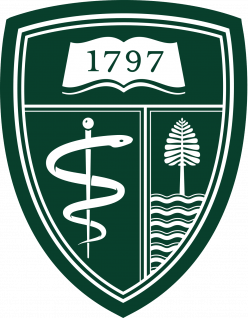Written by Tara Kedia
In my last couple of weeks in Haiti, I’ve been concluding my projects at l’Hôpital Immaculée Conception (HIC), and have also had the chance to see a bit more of the country. (Read more about my work at HIC in my previous post.)

Mixing the first batch of hand sanitizer. It is enough to prove the concept, but not enough to supply a hospital.
Some of the departments at HIC do not have consistent access to soap and water or hand sanitizer, which are important infection-prevention measures. Last week, my supervisor, Cleonas Destine, an infectious disease doctor here at HIC, and I mixed up a batch of hand sanitizer, as per the World Health Organization’s Formulation. We still need to find a pharmacy in Cayes that would be able to mix larger batches to continuously supply HIC with hand sanitizer.
The projects on tuberculosis diagnosis have also progressed further along. We have gotten comments from all the TB staff and infectious disease doctors on a shorter and translated-to-Creole version of USAID’s survey, “Reducing Delays in TB Diagnosis.” This week, we’re meeting with the staff who could administer this survey to patients on a regular basis.
With the help of Cleonas and the TB staff, I have also learned a lot about the use of GeneXpert at HIC. Our research has been a bit challenging, as information on HIC’s TB patients is spread between three paper record books, an electronic lab register, and individual patient files (both electronic and paper), as well as the files at satellite clinics. I was able to visit one of these satellite clinics, the TB Sanatorium. The Sanatorium in Cayes is one of only a handful of sanatoriums that still exist in Haiti. The patients who stay here are being retreated for TB, so an additional antibiotic must be added to their treatment regimen. Because this antibiotic can only be administered by daily injections, these patients must stay at the sanatorium for the 60 days of their treatment. Worldwide, sanatoriums are being shut down or repurposed. The Cayes Sanatorium might become a general infectious diseases clinic.
Sanatoriums were typically built in the mountains, as it was believed that the cool, fresh mountain air circulating through the building would cure TB patients. This has since been disproved (antibiotics cure TB), but the view from the Sanatorium in Cayes probably lifts the patients’ spirits.
Outside of work, I’ve gotten to see a bit of the regions around Cayes. This past weekend I went on an epic excursion organized by the students of the university where my host mother works. There were maybe 50 of us in a school bus, and we drove two hours west from Cayes to Port-à-Piment, the town where the Marie-Jeanne Cave is located. It’s over four kilometers long, and it is the largest cave in Haiti. All of us went with one guide into five rooms of the cave, two of which had natural light, and three of which were too far underground and so were pitch black, requiring flashlights (or, in our case, the flashlight app on our phones) to navigate. Most phones in Haiti are pretty basic (very few smartphones or flip phones), but they have a great extra feature, a penlight at the top, that is indispensable for things like power outages and, this weekend, navigating caves. Unfortunately none of my photos in the caves came out, but they were amazing and worth an online search of “La Grotte Marie-Jeanne” if you’d like to learn more.
After visiting the caves, we got back on the bus to visit Les 500 Marches de la Medaille Miraculeuse in the town of Côteaux, which are 500 stairs up the side of a mountain, at the top of which is a statue of the Virgin Mary. As the story goes, she was seen at this place once upon a time. After climbing the stairs, we drove to Port Salut, a beautiful beach, for lunch and swimming.
In all, I can’t believe my time in Haiti is coming to a close. It feels as though I’ve just arrived—one month is not such a long time, after all. There have been challenging things about my experience here—the frequent and unannounced power outages (including for five days last week, making it difficult for me and especially the doctors to work), and the questions I am asking myself about the roles I can most usefully play in global health work in the future. There have also been amazing things about my experience here—the opportunity to assist in research that can improve TB care for patients, the ability to practice my French, and the close community of Haitians living in Cayes. I feel like I’ve just started to get a good taste of that community during my last week or two here, and for that I am profoundly grateful to everyone who has welcomed me. Merci à tous qui m’ont accueilli ici aux Cayes! Vous allez me manquez beaucoup.
Tara Kedia (’17) earned a BA in Anthropology and Biology from Dartmouth College. She previously interned at the World Health Organization and at the DarDar Pediatric HIV Clinic in Dar es Salaam, Tanzania.



